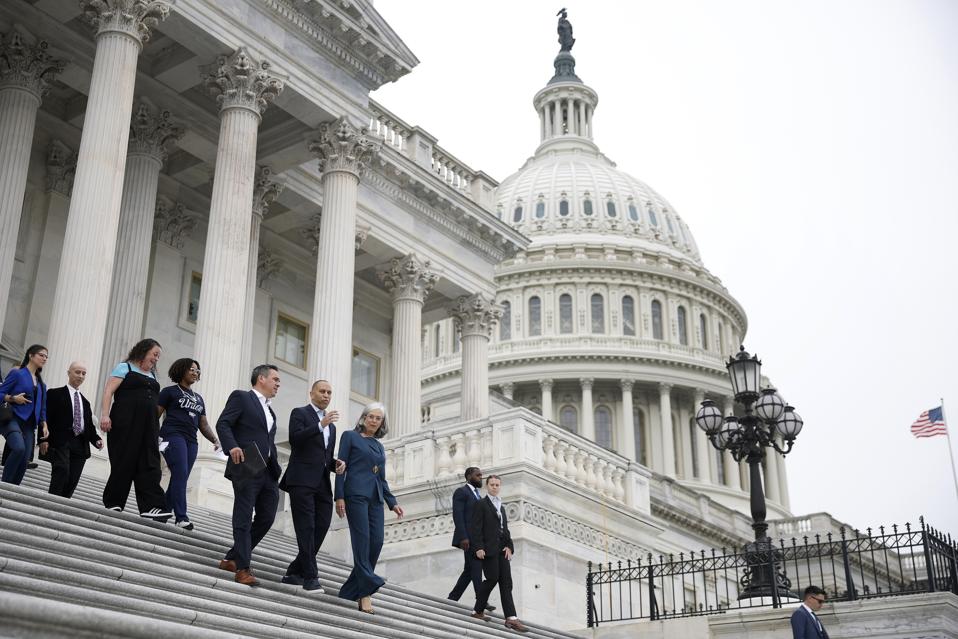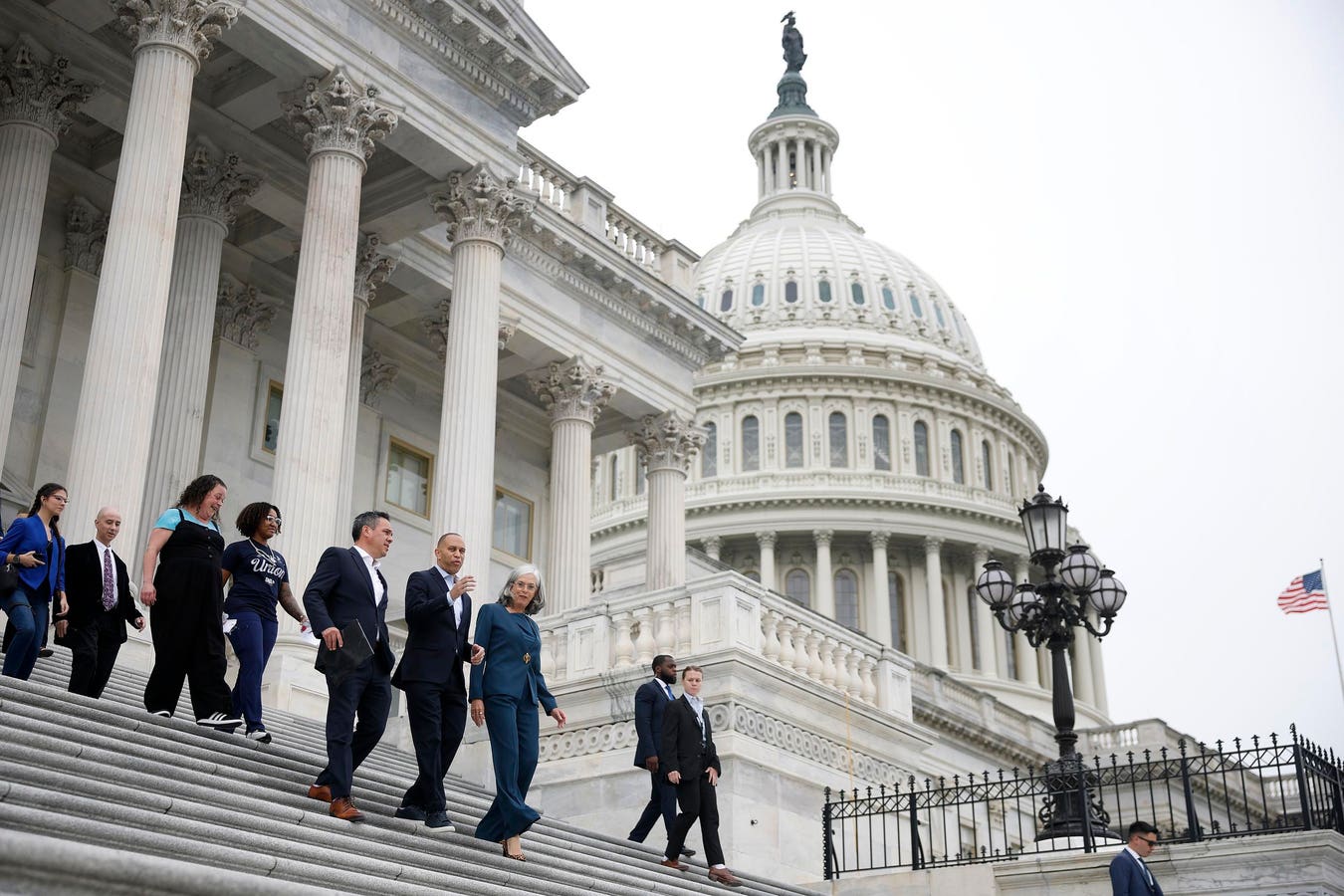
WASHINGTON, DC – SEPTEMBER 30: U.S. House Minority Leader Hakeem Jeffries (C), accompanied by House Minority Whip Katherine Clark (D-MA) and Rep. Pete Aguilar (D-CA) walk down the House Steps as they arrive for a press conference at the U.S. Capitol on September 30, 2025 in Washington, DC. House Democrats demanded that Congressional Republicans negotiate with them on spending to avoid a federal government shutdown that is set to begin at midnight if no deal is struck. (Photo by Kevin Dietsch/Getty Images)
Getty Images
The government and the services it provides are not a light switch that you can flick off and on at will. When they occur, the impacts can last for months, years, or even decades. Flicking them back on is not as simple as lighting up a room. It requires bringing staff back, reinitiating operations, reimagining programs, and overcoming a lag before services reach the public again. That lag has real costs.
Shutdowns have happened 22 times since the 1970s. They are no longer rare events. According to the Congressional Budget Office, the 2018–2019 shutdown, the longest in U.S. history, cost the economy $11 billion, with $3 billion lost permanently. Even shorter shutdowns create backlogs that agencies can take months to resolve. These delays are especially damaging in areas that demand continuity, like environmental protection and resilience.
The costs of shutdowns extend beyond politics
The current 2025 shutdown has had an immediate impact on the Environmental Protection Agency (EPA), which furloughed nearly 90 percent of its staff. That means most inspections, enforcement, and regulatory oversight are suspended. Industrial facilities are not being monitored, routine air and water quality checks have stopped, and new permits are on hold. Only acute emergencies, such as chemical spills or oil leaks, are being addressed.
The absence of oversight creates vulnerability. The communities hit hardest are those already facing environmental justice challenges and those which depend most on consistent federal enforcement and support. Recently, I wrote about how weakened federal oversight often leaves rural and low-income communities most vulnerable. Past shutdowns have seen spikes in emissions as polluters exploit lapses in enforcement. Communities near hazardous waste sites, in particular, face greater risks as Superfund cleanups stall unless there is an imminent threat to life. The same dynamic will apply this time. When the EPA is sidelined, communities near hazardous industrial sites or flood-prone coasts carry disproportionate burdens.
The long-term work needed for environmental resilience has also stopped. All EPA-funded research and grant making are paused. Programs under the Toxic Substances Control Act face delays. Data collection for environmental and climate research is interrupted, undermining the continuity required for sound science.
WASHINGTON, DC – OCTOBER 01: A member of the U.S. Park Service puts up a closed sign at the Washington Monument on October 01, 2025 in Washington, DC. The U.S. federal government shut down much of it’s operations overnight after Congress failed to pass a bipartisan funding bill. (Photo by Kevin Dietsch/Getty Images)
Getty Images
Other agencies are also affected. The National Park Service has furloughed most of its staff, leaving wildlife monitoring undone. NOAA has suspended climate and conservation research. Federal hotlines for reporting pollution or water contamination are silent, leaving local communities without support. The result is a patchwork system. Some states can fill gaps, but many cannot. Environmental safety becomes uneven, depending on where you live.
Rethinking Shutdown Tolerance And Impacts
Shutdowns are often treated as a form of political leverage to address other issues. The reality is they create more problems or exacerbate existing ones. Every pause in enforcement, every stalled cleanup, every missed dataset means lost ground that cannot always be regained. Restarting after a government shutdown does not return us to the same place. It leaves us behind.
There are alternatives to shutdowns. Those could be reworking budget processes, protecting certain essential environmental functions from budgetary brinkmanship, or strengthening continuity-of-operations plans. Any of these could be a more sustainable model for government, for communities, or for the planet.

